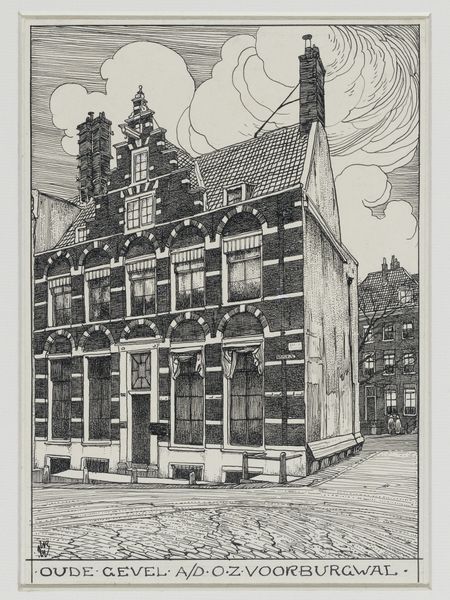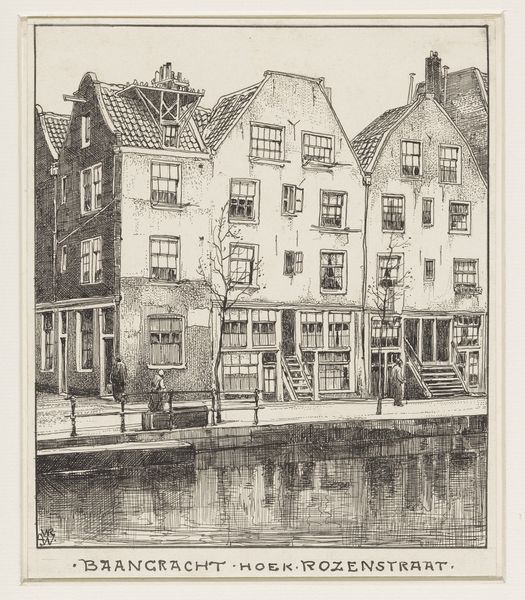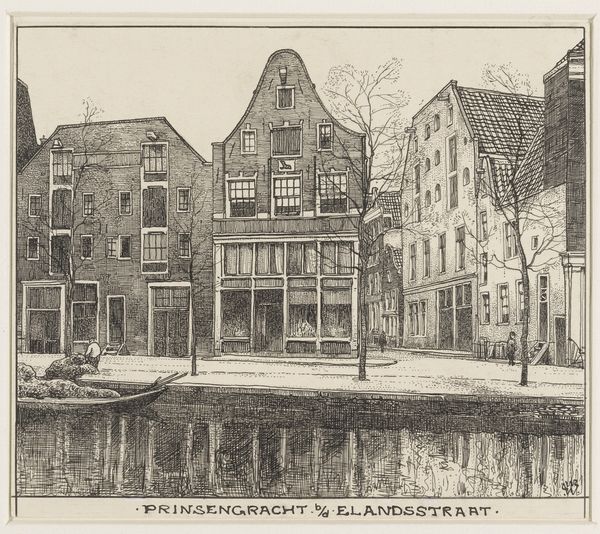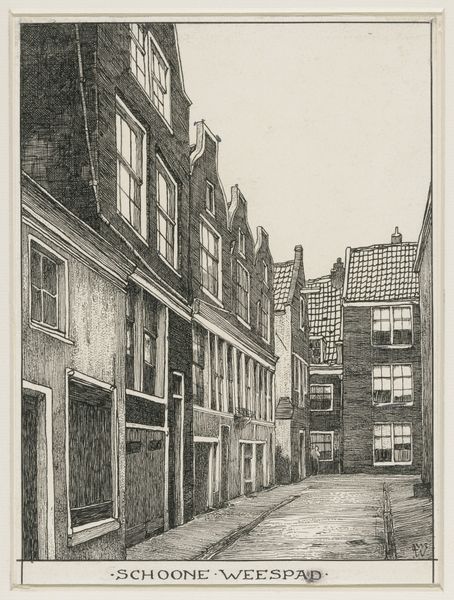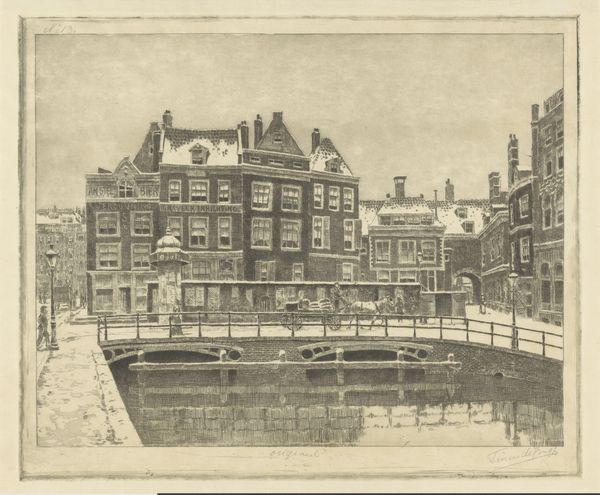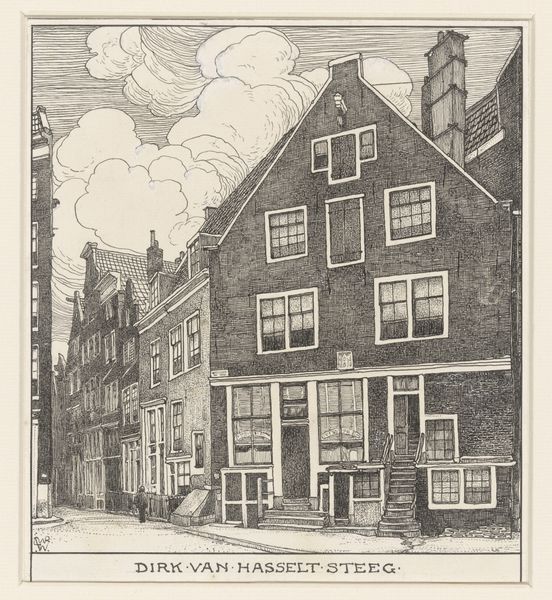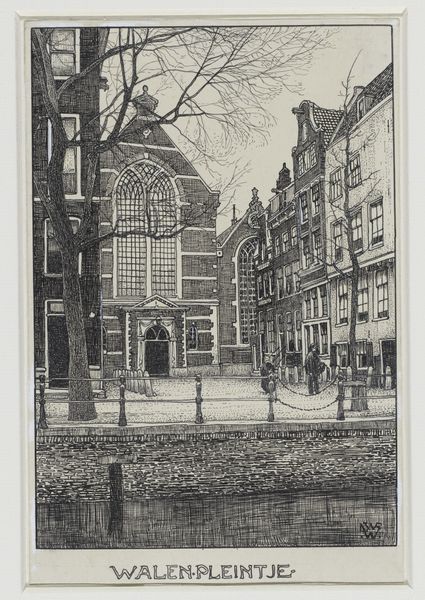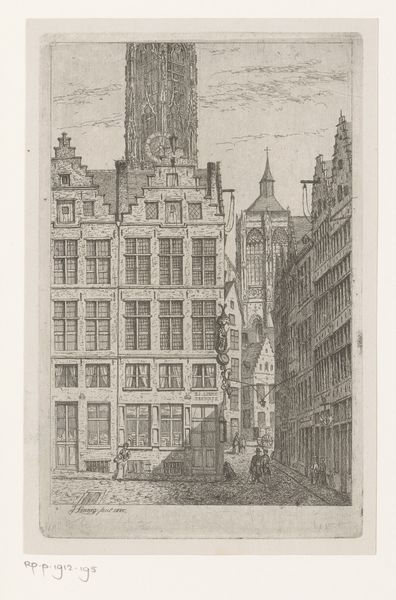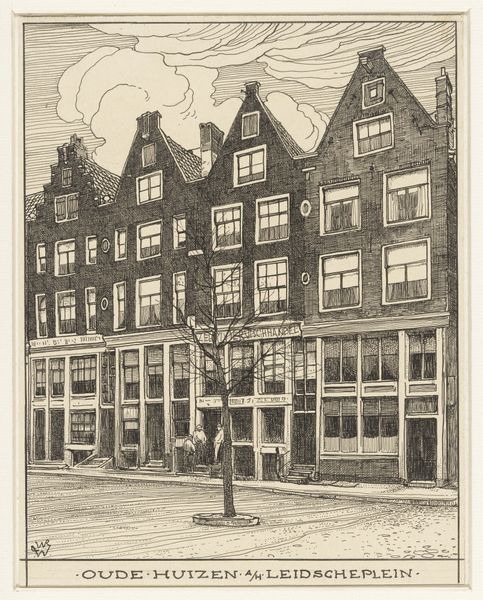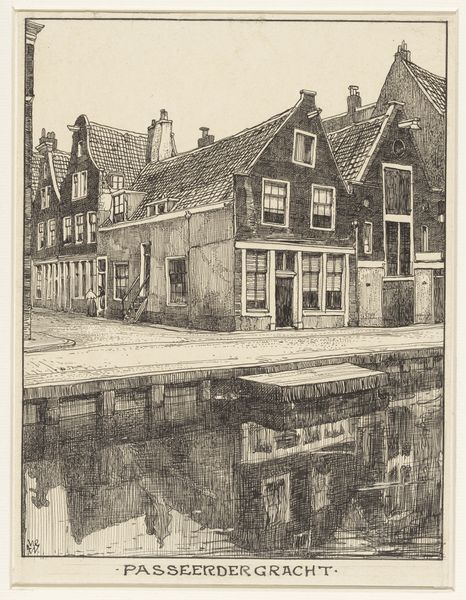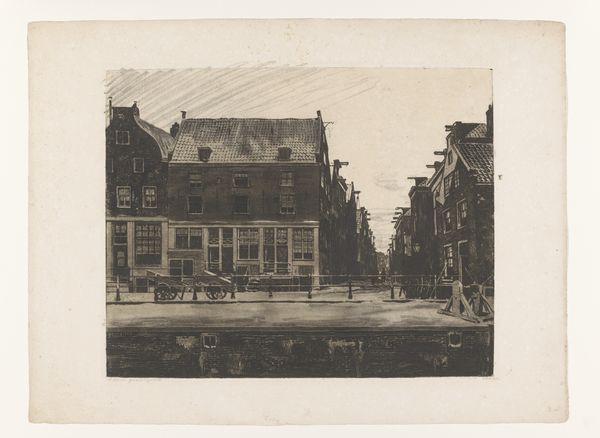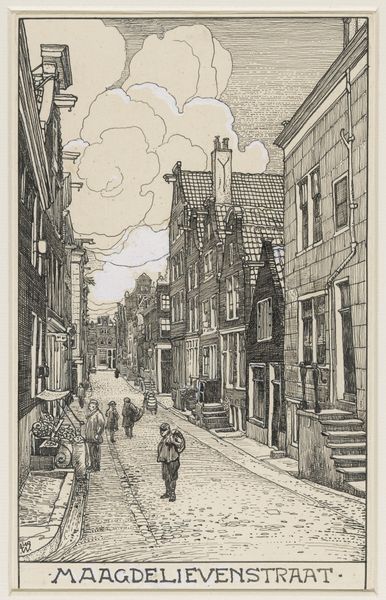
drawing, etching, ink, architecture
#
drawing
#
etching
#
etching
#
ink
#
architectural drawing
#
cityscape
#
architecture
Dimensions: height 206 mm, width 123 mm
Copyright: Rijks Museum: Open Domain
Curator: We're looking at an etching by Willem Wenckebach, likely made between 1870 and 1926, titled "De Armenische Kerk, Krom Boomssloot 22 te Amsterdam" – the Armenian Church on Krom Boomssloot 22 in Amsterdam. It depicts a canal-side view of the church. Editor: My immediate impression is one of quiet dignity. The greyscale palette creates a sense of stillness, a feeling of timelessness within this urban scene. Curator: Indeed. This etching comes at a time when the Armenian community in Amsterdam, having established itself in the 17th century, was facing various socio-political shifts, not just locally, but in their homeland. Wenckebach captures a specific moment in the community's journey, one where their presence is clearly visible in the architecture of the city. Editor: The Church itself projects stability, doesn't it? The repeating arches of the windows almost speak of persistence and a striving towards the divine, but there's also an earthly practicality in the design. Curator: And Wenckebach is so detailed in the rendering of the architecture. Look closely, and you can see the precision. The lines are carefully placed, depicting not only the architectural details, but also the wear and tear that come from existence within a cityscape. Editor: You are so right! The canal acts as a reflecting pool, doubling the structure. Water has long served as a powerful symbol of the unconscious. Could its doubling be mirroring the church, or more pointedly, reflecting its long history within Amsterdam’s landscape and culture? Curator: That's a compelling thought. I see, too, the way the artist subtly incorporates people into the scene. These figures are not grand or heroic; they appear to be ordinary folk going about their daily lives, framed by the architecture and the church itself. I read the architecture almost as the manifestation of something grander. It creates a framing. Editor: The interplay between the church's solidity and the flowing water offers us something important to contemplate. This quiet image of a cityscape holds complex layers. Curator: This has given me cause to think about the various meanings within the church represented: community, faith, history. Thank you. Editor: A rewarding journey of discovery through lines, shapes and symbols, definitely food for thought. Thank you.
Comments
No comments
Be the first to comment and join the conversation on the ultimate creative platform.
